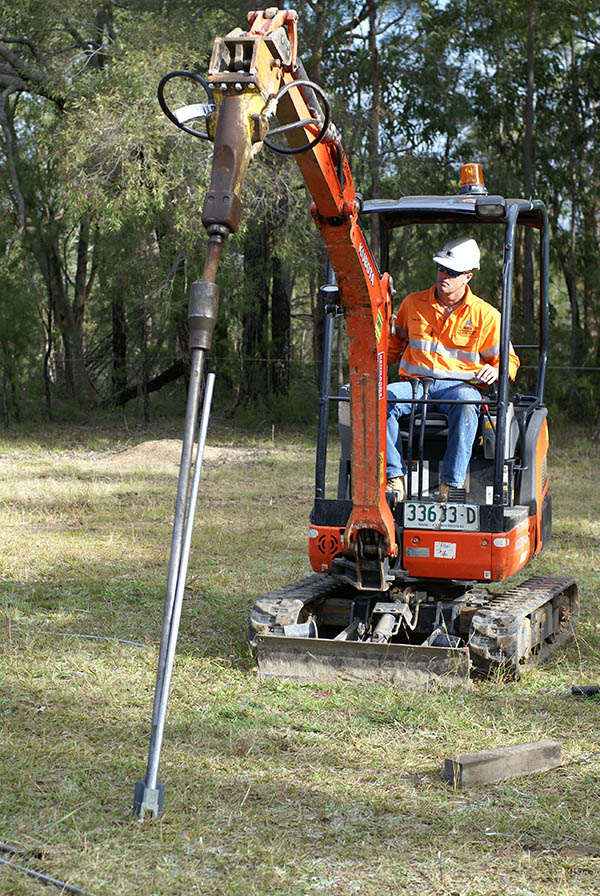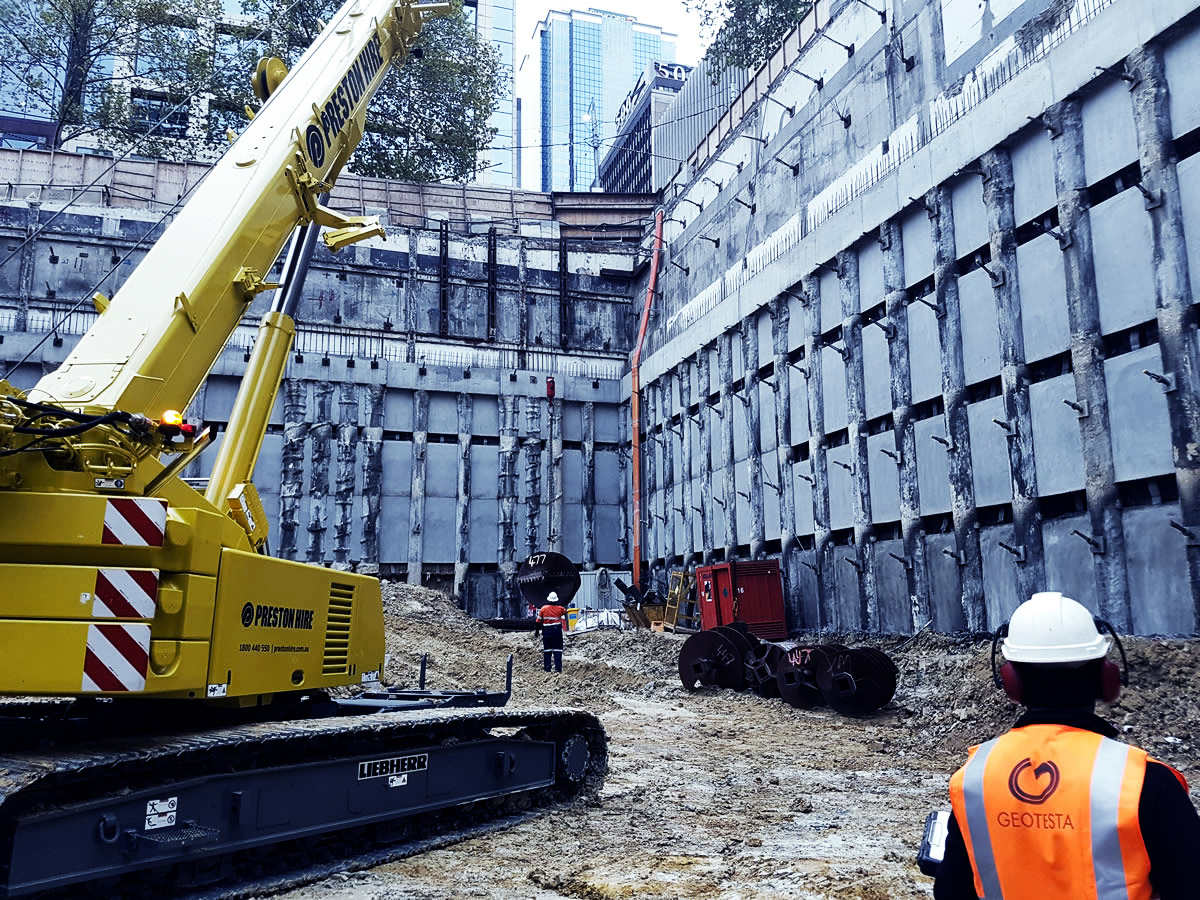How Heavy-Duty Earth Anchors Work: A Comprehensive Guide to Soil Anchoring Solutions
Sturdy Earth anchors play a vital duty in providing security and assistance in numerous construction applications. By embedding deeply right into the ground, they resist side and upright forces effectively. Various kinds of supports cater to various dirt problems, making them versatile. Comprehending their mechanics and installment methods is necessary for optimizing efficiency. What variables influence their performance, and how do they contrast to typical methods? The answers might amaze you.
Understanding Sturdy Earth Anchors
Durable Earth supports function as necessary components in numerous building and landscape design projects, supplying stability and assistance in tough soil conditions. These supports work by being embedded into the ground, where they resist side and upright forces. Their style permits for safe and secure attachment to frameworks, ensuring they stay anchored against soil movement or exterior loads.The effectiveness of sturdy Earth anchors mostly depends on the kind of soil and the support's setup deepness. Correct setup methods are crucial, as they identify the anchor's holding capacity. Ecological factors, such as dampness and freeze-thaw cycles, can additionally affect performance.These anchors are often utilized in applications varying from protecting fences and keeping wall surfaces to stabilizing short-lived frameworks during damaging climate condition. Understanding the concepts behind sturdy Earth supports is essential for specialists looking for to enhance the sturdiness and safety of their jobs.
Kinds Of Heavy-Duty Earth Anchors
Different sorts of heavy-duty Earth anchors are created to fulfill details demands based on dirt problems and job requirements. Helical anchors, featuring screw-like blades, work in softer soils, using high lots capabilities and very easy setup. Driven anchors, which are hammered into the ground, are ideal for rough surfaces and provide immediate load support. Tie-back anchors are commonly made use of in maintaining wall surface applications, enabling lateral assistance by securing right into the ground at an angle. Another type is the cast-in-place anchor, perfect for concrete applications, as they are integrated into structures for enhanced security. Finally, dirt screw supports are versatile alternatives that can be made use of in different soil kinds, providing trustworthy tension and compression capabilities. Each kind serves unique applications, making certain stability and safety and security in building and construction and landscape design projects. Recognizing these options enables notified choices in picking the appropriate Earth securing solution.
The Mechanics of Dirt Anchoring

Understanding the mechanics of soil anchoring needs an assessment of different kinds of Earth anchors and their setup techniques. Each support kind offers special qualities that affect its performance in different soil conditions. Correct setup methods are crucial for maximizing the securing system's stability and efficiency.
Kinds Of Earth Anchors
Earth supports, essential components in dirt anchoring systems, been available in a number of kinds, each made for certain applications and dirt conditions. One of the most common kinds consist of screw anchors, which are turned right into the ground, providing solid lateral resistance. Helical supports include blades that permit for efficient installation in various dirt types, making them appropriate for both short-term and long-term applications. Driven supports, normally made from steel, are hammered into the dirt and are reliable in rocky or dense settings. Auger supports make use of a helical layout to facilitate installation in softer soils. Lastly, plate supports contain a flat plate hidden horizontally, dispersing tons over a larger location, perfect for applications requiring high load abilities in natural dirts.
Installment Techniques Clarified
Correct setup strategies are crucial for the effectiveness of soil anchoring systems. The process usually starts with website assessment, confirming the picked area can sustain the support's load. After determining the right anchor type, proper opening depth and angle need to be established. The setup includes driving the support into the ground making use of customized equipment, such as manual or hydraulic drivers, to attain ideal embedment. Post-installation, tensioning the anchor is crucial to assure security; this is typically confirmed with lots screening. Additionally, surrounding soil conditions should be kept track of to stop variation. Adhering to these strategies not just improves the support's efficiency but additionally prolongs its life expectancy, offering trustworthy support for numerous applications.
Applications of Heavy-Duty Earth Anchors
While durable Earth anchors are often connected with building and construction and landscaping, their versatility encompasses read the full info here a selection of applications across various industries. In civil engineering, they offer crucial support for retaining wall surfaces, guaranteeing stability in locations susceptible to dirt disintegration. The marine market utilizes these anchors for protecting docks and marinas, protecting against motion triggered by tides and currents. Additionally, in the telecom industry, sturdy Earth supports are considerable for maintaining cell towers and various other tall structures versus wind pressures. Agricultural applications also profit, as these anchors can safeguard frameworks like greenhouses and livestock fence, ensuring they hold up against extreme weather. Additionally, in renewable resource jobs, such as wind farms, Earth anchors play a crucial duty in securing turbine foundations, boosting general safety and performance. This wide series of applications highlights the adaptability and dependability of sturdy Earth anchors across different fields.
Advantages Over Standard Anchoring Methods
Although standard anchoring methods have actually long been depended upon for stability, sturdy Earth anchors provide considerable advantages that boost performance and effectiveness. One significant advantage is their exceptional load-bearing ability, which enables them to stand up to greater forces without failure. This toughness makes them perfect for requiring applications, such as in building and construction and utility installations.Additionally, durable Earth supports are made for much deeper setup, supplying better security in different soil problems, including sandy or loose soils. Their resistance to deterioration and ecological elements ensures a much longer life expectancy and reduced upkeep expenses compared to conventional methods.Moreover, these anchors can be set up with very little disruption to the surrounding location, preserving the honesty of the landscape. In general, heavy-duty Earth supports provide a efficient and reliable remedy for anchoring demands, exceeding the restrictions usually connected with standard anchoring strategies.
Installation Process and Best Practices
The setup process for dirt securing solutions begins with complete prep work and website evaluation to guarantee peak efficiency. Following this, a step-by-step installation guide gives clear instructions for efficient implementation (soil anchoring solutions). Complying with these finest methods is essential for achieving trusted and resilient anchoring outcomes
Preparation and Website Assessment
Reliable prep work and complete site evaluation are crucial actions in the setup of dirt anchoring services. Prior to installation, the soil kind have to be analyzed to establish its bearing capability and suitability for securing. Carrying out a geotechnical survey can provide important information concerning dirt make-up, moisture degrees, and possible ground movement. In addition, identifying existing structures, plants, and utilities is vital to avoid interference during installation. The area must be free from debris and challenges to ensure risk-free gain access to for devices. Climate condition need to likewise be checked, as unfavorable conditions can affect both safety and installment effectiveness. By carefully preparing the website and evaluating all appropriate variables, the possibility of effective support performance is significantly enhanced.
Step-by-Step Installment Guide
A comprehensive installation process is crucial for achieving perfect performance of soil securing remedies. The installation begins with selecting the ideal anchor type and assuring the website is clear of particles. Next off, proper opening positioning is determined based upon tons needs. Once the area is established, holes are drilled to the defined depth and diameter using the appropriate tools. The support is then inserted right into the opening, making certain it is lined up properly. After securing the anchor, soil is backfilled and compacted to boost stability. It is important to comply with manufacturer guidelines throughout the process. A post-installation inspection confirms that the supports are sufficiently positioned and working as planned, giving trustworthy assistance for the designated application.

Upkeep and Evaluation of Earth Anchors
Normal maintenance and assessment of Earth supports are necessary for guaranteeing lasting performance and security. Regular checks enable the early discovery of issues such as deterioration, loosening up, or dirt movement. Examiners should try to find signs of corrosion or degradation on the anchor elements, particularly at the connection factors. In addition, the surrounding dirt ought to be assessed for erosion or modifications in dampness material, which can impact anchor effectiveness.It is recommended to develop a routine evaluation routine, ideally a minimum of once a year, depending upon ecological problems. During evaluations, all visible parts need to be cleaned up to get rid of dust or particles that could hide possible troubles. Any type of indications of distress, such as tilting frameworks or unusual settling, must motivate instant examination. Proper paperwork of evaluations can assist in monitoring anchor performance with time and help with prompt maintenance activities, ensuring the supports continue to be trustworthy and practical.
Regularly Asked Questions
What Products Are Heavy-Duty Earth Anchors Generally Made From?
Durable Earth anchors are commonly created from durable materials such as galvanized steel or stainless-steel, making certain stamina and resistance to rust. These products supply durable assistance and stability in numerous soil problems and applications.
How Do Soil Problems Impact Anchor Efficiency?
Soil conditions significantly affect anchor performance. Aspects such as soil type, dampness content, and compaction impact the support's hold and stability, with cohesive dirts often providing far better resistance than loose or sandy dirts, impacting general effectiveness.
Can Heavy-Duty Earth Anchors Be Reused After Elimination?
Heavy-duty Earth anchors can be reused after removal, offered they are inspected for damages and wear. Correct cleaning and maintenance improve their long life, ensuring reliable performance in succeeding setups when conditions permit safe reinstallation.
What Are the Environmental Influences of Utilizing Earth Anchors?
The ecological effects of using Earth supports check out here consist of potential soil disruption, interruption of local environments, and possible contamination of groundwater. Nonetheless, if made use of properly, their advantages frequently exceed these worries, promoting security in numerous applications.
Just how Do I Pick the Right Support for My Task?
